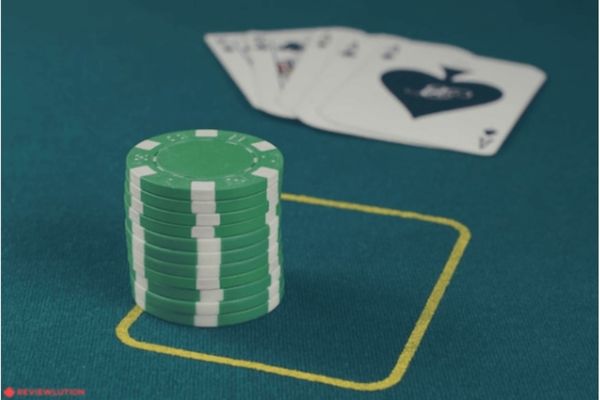How to Count Cards in Poker? A Card-Counting Guide
Looking to increase your chances of walking away from a poker game with money? Learning how to count cards in poker can be a great place to start.
Although this is a widespread blackjack technique, card counting is a strategy employed by some of the biggest poker players to gain an edge over their opponents.
Read on as we go over the different ways you can count cards in poker.
How Do Poker Players Count Cards?
Card counting involves tracking and memorizing the cards that have been dealt out of the standard deck of cards during a game.
Players can count cards in poker, too, although it does not work the same way as it does when playing blackjack. Here you are not trying to gain an advantage over the house, but rather calculate your odds against other players and thereby make a more profitable decision.
There are other differences as well.
- In blackjack, more cards are shown face up so have more information to work with. With poker, you see fewer cards face-up, plus the deck is shuffled after each hand, which means traditional card counting, such as trying to guess which cards come in future hands, or back counting, won’t work.
- The card-counting advantage you get in poker is not as big as the one in blackjack, so don’t expect huge windfalls at the poker table just because you used certain strategies.
- Counting cards in poker only works with certain versions of the game like Texas Hold’em or Seven-Card Stud.
Finally, you must remember that as with any gambling technique, there is never a 100% chance of success.
Note: If you’ve never played poker before, you might want to take the time to get to know the basics before you start looking at more advanced techniques.
How To Count Cards in Poker?
1. Count cards in poker by using blockers
Although it is not technically considered card counting, in poker, you can use your own cards and community cards to get a better idea of what your opponents might be holding (or not holding).
This is known as using blockers since it allows you to eliminate some cards from your opponent’s range.
So, if you are playing Texas Hold’em and you are holding A♥ K♣ and the community cards are J♥ 9♥ 6♥ 5♠ 3♣, you can know for sure that your opponent can’t have an Ace-high flush since you have the A♥.
Using all the information on the board can give you a strategic advantage over the other player. In this case, you can use your Ace of hearts blocker to make your bluff since you know they don’t have the flush in their hands.
This technique works best with community card poker like Texas Hold’em and Omaha.
2. How to count cards in Seven-Stud Poker
Although Seven-Card Stud has lost its popularity over the years, there are several online poker sites that still offer the game. What’s more, many of the versions of Seven-Card Stud (such as Razz poker and Seven Card Stud Hi/Lo) are still played, so knowing how to count cards in this poker variant is sure to come in handy.
In all Seven-Card Stud versions, players are dealt four upcards, at least one with each hand. Although most players will fold on first street, you can count the folded cards and use this information as a strategic advantage. In other words, by counting the folded cards, you know that you will not see those cards in the hand of another opponent.
This is not an industry secret by any means. On the contrary, counting cards in stud poker is essential to being a good player, and all experienced gamblers use this strategy to guess their opponents’ hands.
3. Counting the Outs
This technique is also not seen as counting cards technically, but calculating the outs and the equity are effective methods you can use.
An out in poker is defined as any card that can make your hand better or worse. By using this card-counting practice in your game, you will be able to tell what the chances are of your or your opponent’s hand improving, so you can adjust your strategy accordingly.
To illustrate this, let’s assume you have a flush draw with A♦10♦ on a J♦ 4♦ 7♠ flop. Since a 52-card deck has 4 suits, each with 13 cards, and you can see four cards of the same suit, your outs would be the 9 remaining cards of the same suit.
Here is a helpful checklist of the most common outs for post-flop play, courtesy of Pokerology.
| Hand | Hope to make | Outs |
| One pair | Three of a kind | 2 |
| Two pair | Full House | 4 |
| Inside straight | Straight | 4 |
| Open-ended straight | Straight | 8 |
| Four flush | Flush | 9 |
| Straight and flush draw | Straight/Flush | 15 |
You can also check out this tutorial for more info on how to count outs.
While this is all great information, to be able to use this knowledge in the actual game you also need to know how to calculate equity.
How to calculate equity
The pot equity is the percentage of the pot that you’re likely to win based on the hand you are holding at a given point in time. Usually, pot equity calculations come into play during the flop and the river because that’s when the hands and game dynamic changes the most.
To calculate the equity, most players use the rule of 2 and 4. What you do is multiply the number of your outs by 4 (if there are two cards to come) or by 2 (if there is one card to come).
Continuing with the same example—you are on the flop, so you multiply the number of your outs (9) by 4, giving you a 36% of hitting your hand. If you are on the turn, you multiply the number of outs (9) by 2, so you get an 18% chance of getting the hand you hope to make.
Note: These percentages are simply rough estimations and may not always show the correct numbers.
How to calculate the odds
The next step is to calculate the odds. To do this divide the amount you need to call by the total amount in the pot after you call.
So, let’s say there is $50 in the pot and your opponent went in for another $50. If you call, the size of the pot would reach $150, so divide 50 (your call) by 150 (the size of the pot) and you’ll get 0.33 or 33%.
This means that the minimum equity you need to break even in this situation is 33% and as the odds of getting one of your outs is 36%, the math says that the correct play is to call your opponent’s wager.
Can you count cards in online poker?
Yes, the same card-counting techniques apply, no matter if you are playing online or not.
What’s more, when playing poker online you can use software, such as PokerTracker and Holdem Manager, to get some insight into your opponents. These software programs record hand histories in order to provide analysis and statistics, i.e. give you an overview of your performance, habits, play history, and opponents’ tactics. Most of them also come with a Heads-Up Display that tracks and shows poker stats in real time.
Keep in mind that these programs are not free, so only get them if you’re serious about improving your abilities.
Is there any card-counting software you can use in online poker?
You might come across several sites claiming to provide card-counting tools for online poker. Due to the nature of the game, it’s safe to assume that most (if not all) are a hoax and sadly far from the only casino scams you are likely to find when playing online. If you do encounter such sites, don’t fall for the success stories you might read and stick to legit poker software programs that only analyze, rather than predict, your opponent’s hand.
Is Counting Cards Illegal in Poker?
No, even though rules and gambling laws in Canada vary across provinces, none have deemed counting cards as illegal. It doesn’t warrant a ban either.
In fact, it is one of the strategies poker players use to try and gain an advantage over their opponents, so it is often encouraged rather than frowned upon.
Conclusion
Learning how to count cards in poker can give you an advantage, but it will only take you so far. In other words, you can use blockers or calculate the odds to decide whether to call, raise or fold, but you should take all these estimations with a grain of salt. This is not exactly science and sometimes it can be a better idea to go with your gut and experience rather than rely on card counting methods.
FAQ
Since Texas Hold’em uses community cards, you can use these and the hole cards as blockers. That is try and guess what hands your opponent can’t make since you are holding one of the cards required. You could also try and count the outs and equity and then determine whether you should call or fold, although this method is only recommended on the flop and on the river.
Counting cards in poker is not difficult, especially if you are using blockers. That said, it is not recommended that newbies to poker use these card-counting techniques as they may distract them from the actual game. A pro player can afford to analyze and strategize, while beginners might spend too much time trying to guess their opponent’s hand and fall behind in their own game.












